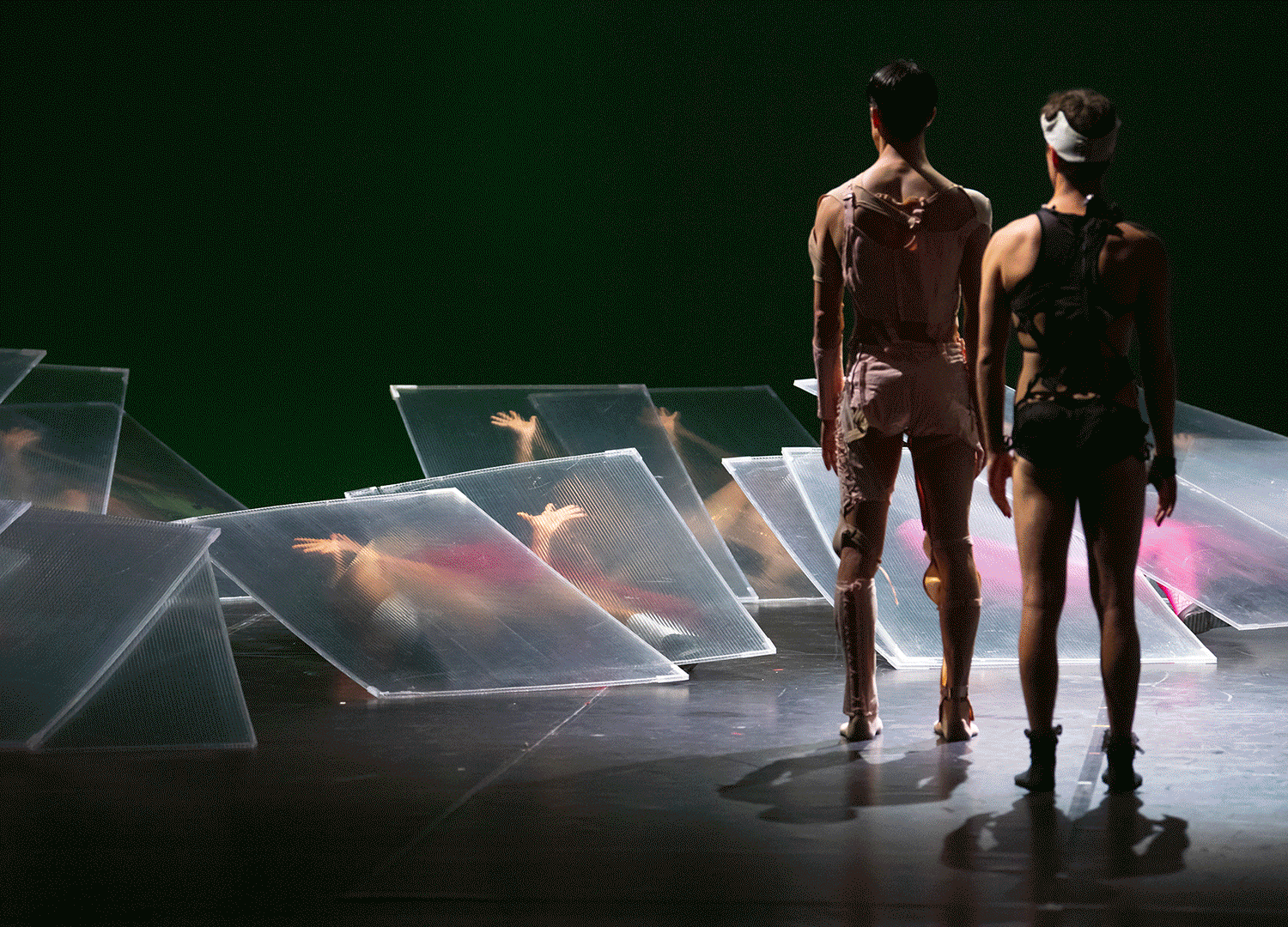Program Not Swedish enough! : Mesdames et Messieurs
Program Not Swedish enough! : Mesdames et Messieurs
12 dancers / 25 minutes
Piece of the program Pas assez suédois !
Project as part of the Ballets Suédois (1920-1925) centenary celebrations
From Ciné-Sketch to Mesdames et Messieurs
A colorful cast of characters are revived to a time they no longer belong, to a place that is only in their making. Like a former great something, all they have is their fantasy and a longing to be seen again. But the memory is sketchy, was it a film they were in or was it a dance or maybe it comes from a time or parallel universe where there was less classification between the two. There is an earnest enthusiasm to immerse themselves in what was, but with the loss of the facts how might these characters reimagine their story? They remain in a balance of quality, humor, failure, gender, of being modern while often allowing themselves to fall into the passé. With passion they plunge themselves into one scenario after another. Like most research into history, we are, and they are, left with only patchy, fun and tattered elements. The Mesdames et messieurs try to reinvent the show, but wait… what show was it they were a part of again?
Finally, in the end they are left with the desire to be immortalized, like a fixed image in a photograph, preferably seen twenty-four frames per second.
In 1924, as one of the last events of the famed Ballet Suédois, Francis Picabia created Cinésketch. As part of the festivities of their New Year’s celebration, Picabia presented what he described as a sketch that took inspiration from films - films take their inspiration from the stage why can’t the stage play take its inspiration from film. The only documents of the original vaudeville, comic, burlesque theatrical performance are an image by Man Ray of Marcel Duchamp and Bronia Perlmütter as Adam and Eve and a manuscript written by Picabia where he starts to formulate a scenario of a “film” performed on stage. Physical humor, pies in faces, nudity, gender exchange, Picabia referenced low brow comedy for his high brow audience.

Petter Jacobsson and Thomas Caley
The choreographers and dancers Petter Jacobsson and Thomas Caley, started collaborating in the nineteen nineties, choreographing works for Martha@Mother, the Joyce Soho in New York and the opera Staden for the Royal Opera House in Stockholm, a commission for the 1998 Cultural capital of Europe. For the Royal Swedish Opera, Ballet and Orchestra they created two immense Happenings, In nooks and crannies 2000 and 2001. The two different performances, occupied non-traditional performance spaces throughout the entire theatre.In 2005 they started their own company creating works entitled Nightlife, Untitled partner, Flux, No mans land - no lands man and The nearest nearness. In 2002 they received a “Goldmask” for the musical Chess with Björn Ulveus and Benny Andersson (ABBA).
As of 2011, Petter is choreographer and the Artistic Director and Thomas choreographer and the Coordinator of Research for the Centre Chorégraphique National - Ballet de Lorraine, Nancy. For the company they have created Untitled Partner #3, Performing Performing, Relâche, Armide, Discofoot, L’Envers, Record of ancient things, Happening Birthday, For Four Walls, Air-Condition and Mesdames et Messieurs.
Their programming for the CCN is organized around questions or themes and each year they invite a wide variety of artists both French and international to play and question within them.Their first programming season 2012, was entitled La saison de La. There they asked why is it Le Ballet but La dance? In response to this question of gender they presented solely female choreographers of diverse backgrounds. The season Tête à tête à têtes was a dialog focused on our modernity and its influences and connections with contemporary artists and spectators. Live! was a celebration of the ephemerality of the performing arts. Together with the continuing seasons, Folk + Danse = (R)évolution, Unknown Pleasures, 50 ans!, Fifty Plus, Useless Beauty, Fiction addiction, Ready! (Made) and tlm (Tout le monde) all have continued to challenge, celebrate and question. To insure a continued lively and non fixed use of the artform they have also worked with the Musée d’Art Moderne in Paris and Centre Pompidou- Metz and Paris, and an original initiative LAB-BLA-BAL, a series of discussions and open house art experiments.
Born in Stockholm, Petter Jacobsson started his studies in dance at the age of three and was further educated at the Royal Swedish Ballet School, the School of American Ballet under Stanley Williams and he later graduated from the Vaganova Academy in St.Petersburg in 1982. As a principal dancer with the Sadler’s Wells Royal Ballet in London between 1984 to 1993, he toured internationally dancing all of the renowned classical roles as well as appearing as guest artist with numerous international companies. He later moved to New York to begin a freelance career, dancing with Twyla Tharp Dance Company, Merce Cunningham Repertory group, Irene Hultman Dance and later with Deborah Hay. In 1999, Petter was appointed artistic director of the Royal Swedish Ballet in Stockholm.
Thomas Caley started his dance training at Interlochen Arts Academy in Michigan, he continued his education earning a BFA from Purchase College in upstate New York in 1992. After graduating from university, a year was spent experimenting, performing in a multitude of independent projects in New York City. From 1993 until 2000 he was a principle dancer with the Merce Cunningham Dance Company touring throughout the world and participating in the creation of twelve new works. In 2000 he moved to Stockholm to continue his collaboration with Petter Jacobsson and to continue working as a freelance dancer in Europe, in France Thomas has worked with Boris Charmatz on the 50 ans de danse & flip book projects.
